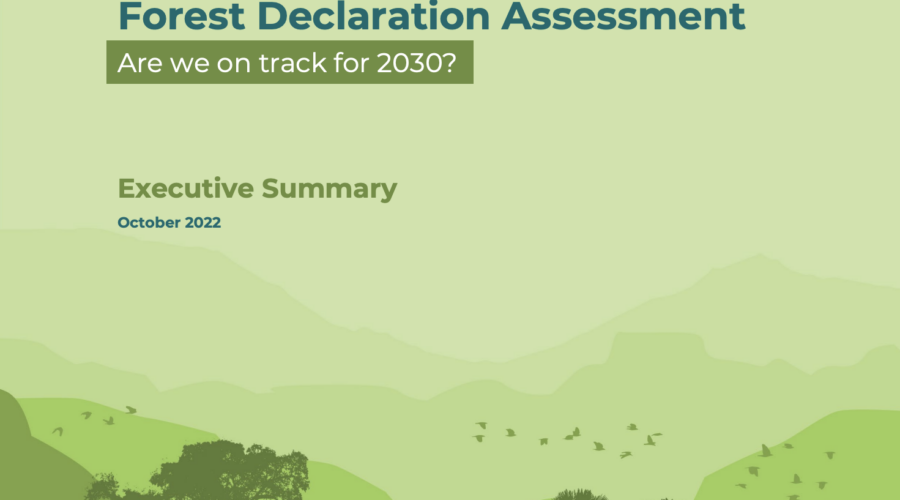Progress toward 2030 forest goals
Only eight years remain to achieve the twin global goals of halting and reversing deforestation by 2030. Despite encouraging signs, not a single global indicator is on track to meet these 2030 goals of stopping forest loss and degradation and restoring 350 million hectares of forest landscape.
The 2022 Forest Declaration Assessment sheds a stark light on the state of global forest commitments but offers hope that achieving the 2030 forest goals is possible. The Assessment is presented as series of four reports on Overarching forest goals (Theme 1), Sustainable production and development (Theme 2), Finance for forests (Theme 3), and Forest governance (Theme 4)—all summarized in an Executive Summary.
Overarching forest goals
To be on course to halt deforestation completely by 2030, a 10 percent annual reduction is needed. However, deforestation rates around the world declined only modestly, in 2021, by 6.3 percent compared to the 2018-20 baseline. In the humid tropics, loss of irreplaceable primary forest decreased by only 3.1 percent.
Globally, forests became more degraded in 2021, but more slowly than during the 2018-20 baseline period; if continued, this slowdown may in time put the world on track to meet the 2030 target.
Tropical Asia is the only region currently on track to halt deforestation by 2030. While deforestation rates in Tropical Latin America and Africa decreased in 2021 relative to the 2018-20 baseline, those reductions are still insufficient to meet the 2030 goal.
Notable progress in afforestation and reforestation efforts over the last two decades have resulted in new forest new forest areas the size of Peru, with net gains of forest cover in 36 countries. However, overall losses exceeded gains over the same period, resulting in a net loss of 100 million hectares globally.
The building blocks for progress
Forest goals enshrined in the New York Declaration on Forests, the Glasgow Leaders’ Declaration on Forests and Land Use, the Bonn Challenge, and other pledges recognize that halting deforestation and restoring forests requires a wide array of actors and the need to balance environmental, social, and economic interests. These goals provide the most concrete statements of global ambition to protect and restore forests – which are critical to meeting the aspirations of the Paris Agreement, the Sustainable Development Goals (SDGs) and many other global ambitions.
The accompanying reports from this Assessment—focused on sustainable production and development (Theme 2); finance for forests (Theme 3); and forest governance (Theme 4)—highlight critical actions that a variety of stakeholders must enact to meet their forests goals. Governments, companies, and civil society must collaborate to accelerate forest action, supported by transparency and accountability. Governments must carefully consider whether voluntary action is a viable foundation to achieve the 2030 forest goals, and how the role of mandatory action, disclosure, and accountability should be increased. Meanwhile, companies need to urgently increase the scope and stringency of corporate action, whether voluntary or mandated. A variety of private sector actors—companies, financial institutions, and philanthropies—have not yet leveraged their significant power to steer development and commodity production onto a sustainable trajectory in line with forest goals.
Additionally, funding for forests will need to dramatically increase – by up to 200 times – to meet 2030 goals. Indigenous Peoples and local communities, who are the most effective stewards and guardians of their forest territories, receive far less funding than their estimated finance needs for securing tenure rights and preserving forest ecosystems. Financial institutions and companies across sectors must recognize and act on the inherent business risks presented by deforestation and forest degradation and put in place measures and policies to combat this risk. Public sector actors must take concrete and far-reaching steps to implement and expand their finance commitments and align fiscal and financial policies with forest goals. Where private sector actors choose to invest in nature conservation and restoration, they must ensure that they are supporting high-quality and high-integrity interventions in line with the mitigation hierarchy and science-based targets.







